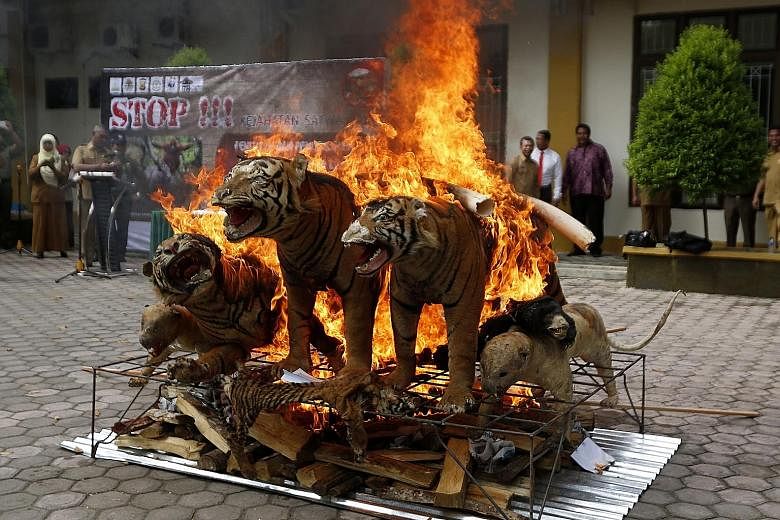This year's World Environment Day on June 5 puts the spotlight on the illegal trade in wildlife. The problem has particular significance in Asia, which is the destination for most of the ivory taken from 20,000 to 25,000 elephants, and the horns of more than 1,200 rhinos killed in Africa every year. Demand in the region is driven by fast-growing middle and upper classes with an appetite for exotic pets, decor, food and fashion.
While several iconic species including rhinos, tigers and elephants are now in decline, with some populations pushed to the brink of extinction, it is actually less-known species such as pangolins, turtles and reptiles that are most frequently smuggled across borders in South-east Asia.
Although it is difficult to obtain an accurate valuation of the regional wildlife trade, it is known that prices of some species are subject to speculation - often driven by proximity to extinction - and that the profits made by organised crime are significant.
Despite a variety of national and international instruments to counter the problem, transnational criminal groups have been able to circumvent regulations and to launder illegally sourced wildlife into legal markets. This often happens through fraud, advanced smuggling techniques or more simply with corruption.
The size of some recent seizures - several tonnes of ivory were intercepted over the past few years in Cambodia, Hong Kong, Malaysia, Singapore, Thailand and Vietnam - and the variety of nationalities of the couriers arrested leave no doubt about the organised and transnational nature of wildlife trafficking.
We are paying a heavy price.
The illegal wildlife trade undermines our ability to meet the 2030 Sustainable Development Agenda adopted last year. Ivory from a poached elephant is worth about US$21,000 (S$29,000) a kg while a living elephant can generate more than US$1.6 million in economic activity. The illegal wildlife trade also has serious negative impacts on biodiversity, leading to the extinction of species and damage to habitat.
The environmental impact of the illegal wildlife trade also goes beyond the immediate detrimental effects on target species, and can result in the spread of diseases or introduction of invasive species when live animals are moved across international borders.
In a landmark resolution last year, the United Nations General Assembly called on countries to declare the illegal wildlife trade a serious criminal offence. Discussions at the second United Nations Environment Assembly that has just taken place in Kenya reaffirmed the urgency of stepping up efforts to combat wildlife crime through concrete actions at the national level and through expanded international cooperation.
There are also signs that leaders in this region have started to recognise the significance of the problem - the last Asean Ministerial Meeting on Transnational Crime added trafficking in wildlife and timber to the list of priority transnational crimes for the region to address.
Given the size of the market for wildlife in Asia, it is important that political statements in the region are followed up with concrete actions, and that the illegal wildlife trade is treated as a serious organised crime like drug trafficking, human trafficking and smuggling, terrorism and arms smuggling.
Addressing the illegal trade in wildlife will require collective coordinated action, working across source, transit and destination countries, in the most strategic hot spots across the supply chain. It is important to shift the focus of the criminal justice response from couriers and poachers to trade controllers and corrupt facilitators. Legal loopholes need to be closed and laws and penalties made tougher in conjunction with anti-corruption provisions.
Hopefully, greater public awareness will bring pressure to bear on governments to enforce laws.
On Sunday, as we mark World Environment Day, the United Nations is calling on everyone to stop wildlife trafficking.
Everyone has a role to play, from lawmakers, community leaders, police and Customs officers, prosecutors and judges to businesses and the average citizen.We urge you to join us in calling for zero tolerance. Wildlife trafficking needs to be stopped.
• Isabelle Louis is acting regional director of the United Nations Environment Programme Regional Office for Asia and the Pacific.
• Jeremy Douglas is Regional Representative of the United Nations Office on Drugs and Crime, Regional Office for South-east Asia and the Pacific.

